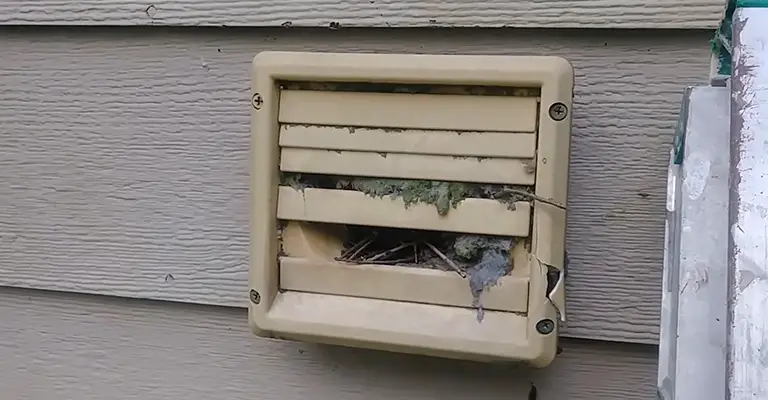Ensuring the proper functioning of your clothes dryer is crucial for both efficiency and safety in your home.
One common issue that can hinder your dryer’s performance and pose a potential hazard is a clogged dryer vent. But how can you tell if your dryer vent is clogged?
Do your clothes still feel damp after a dryer cycle? When you dry clothes, do you smell a burnt smell? You may have a clogged dryer vent.
It doesn’t take long for a clogged dryer vent to become a serious problem. Learn why dryer vents should be cleaned regularly and what warning signs to watch out for.
Here Are The Symptoms Of A Clogged Dryer Vent
When determining whether your dryer vent is clogged, you should look for the following warning signs.
1. Excess Dry Times
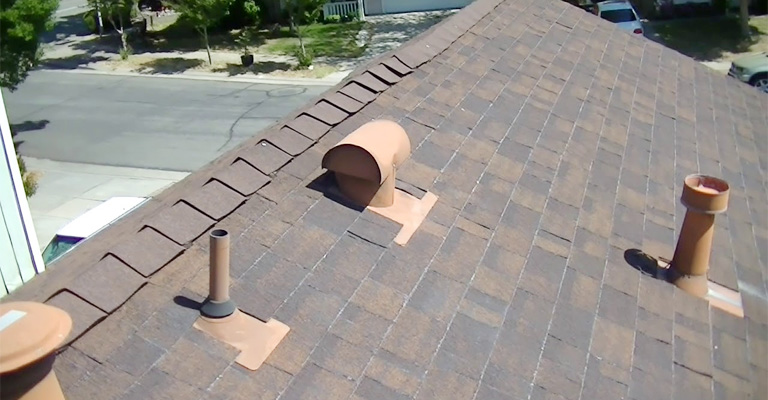
If your clothes are not fully drying after a regular dry cycle, it could be because your dryer vent is clogged. Each load should take no more than 30-40 minutes to dry.
Clogged dryer vents cause the air to be trapped and keep your clothes moist and hot, which will cause your clothes to take longer and longer to dry.
Your clothes may still feel damp after being dried if you remove them from the dryer after the cycle. This indicates that your dryer vent needs to be cleaned.
2. Higher Electricity Bills
Getting a surprise utility bill is not a pleasant experience. Your dryer may be responsible for a rise in electricity costs if you notice an increase.
It requires more wattage and more work to dry your laundry when this appliance isn’t working properly. A motor needs to work harder to compensate for air blockages if there are any.
In order to get your laundry truly dry, you may have to wash it more than once. As a result, your monthly electric bill will increase unexpectedly. It is actually more economical in the long run to maintain your dryer.
3. Sizable Lint
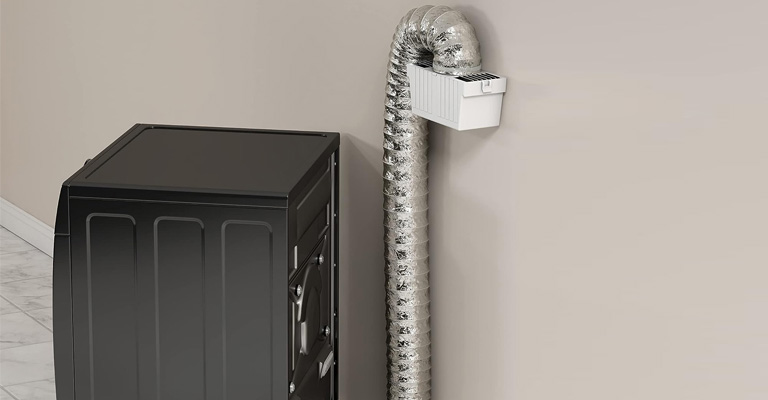
Cleaning out your lint filter/tray is a good idea before starting a new cycle, but if you notice excessive amounts of lint every time you clean it out, chances are that your dryer vent is clogged.
You may even notice that a large amount of lint accumulates around your dryer and laundry room, as well as outside the lint filter.
4. Lack of Lint in the Trap
Your dryer has a lint trap to collect the lint on your laundry. After each cycle, we know it needs to be cleaned out, but what if the trap is never cleaned?
It is likely that an obstruction is causing lint to get stuck in your machine in this case. You should contact a specialist as soon as possible to have your dryer vents cleaned.
5. Hot Exterior
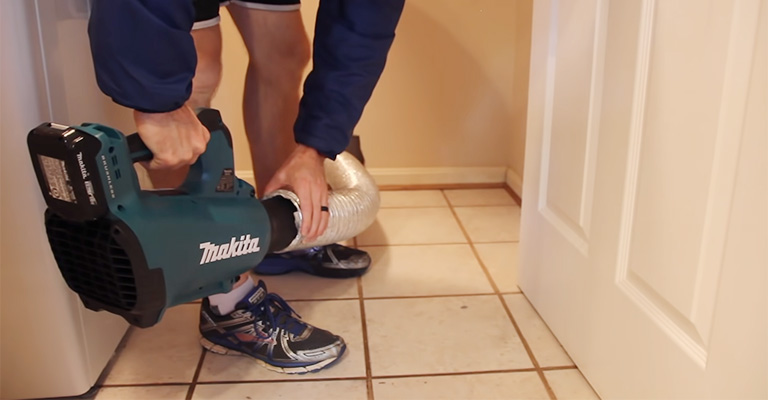
During a cycle, the dryer will feel extremely hot due to the strain it is placing on itself while drying your clothes. During the drying process, dryers remove heat and moisture.
The dryer basically sits there and continues to dry itself, but can no longer keep up with the drying rate if heat and moisture cannot leave the dryer.
Heat builds up without a way to escape, causing your dryer to overheat and ultimately catch fire.
6. Overheating Shutdown Problems
When the motor senses it is becoming overheated, clothing dryers have built-in switches that trigger.
Blockages in dryer vents restrict airflow to the point where the machine is tripped, preventing it from running and cooling down properly.
The problem can get worse if you restart the appliance before it is cool enough to operate safely.
An electrical fire can occur if the dryer continues to overheat because the motor becomes too hot. The situation is dangerous, as you might imagine.
7. Burning Smell
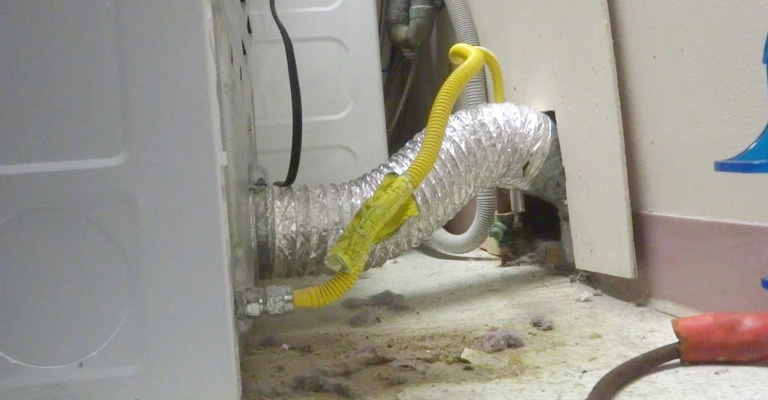
Are you noticing a burnt odor coming from your dryer whenever there is a load in the machine? You are not imagining things.
It’s your dryer that’s causing the smell. Clogged dryer vents mean your dryer has to work harder to dry your clothes, causing it to create a burnt smell after overworking itself.
8. Crushed Dryer Hose
Ensure that the hoses between the wall and the dryer are not pinched if you haven’t checked behind your dryer in a while.
There is an issue here because there is a hazard associated with the restricted airflow. You can resolve this problem by contacting the company that handles your dryer vent cleaning.
9. Mold or Mildew Smells
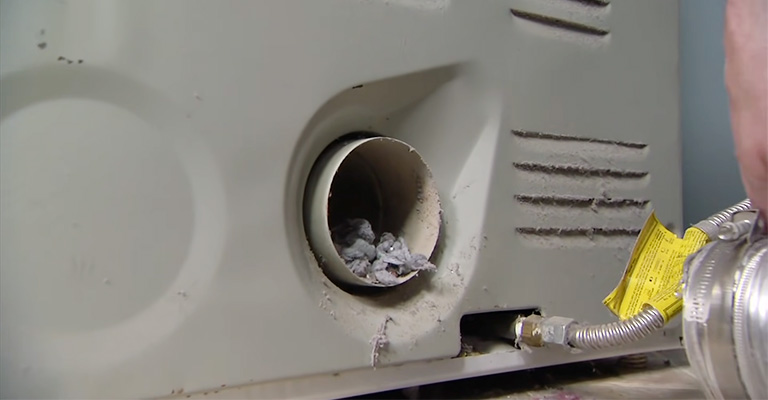
As cotton fiber is the majority of lint, it will act as a sponge to absorb moisture. In the event of a blockage, hot, moist air can push through and raise the levels. The moisture cannot be effectively dried out and can become a moldy mess.
You can place your clothes in the dryer while the smell of mold and mildew spreads inside your venting tube. Moldy odors in laundry can be confusing since laundry should smell clean and fresh.
10. You Haven’t Cleaned Out Your Vents In Over A Year
The last time you cleaned your vents was over a year ago. Cleaning the dryer vent once a year is a standard practice for most households. Vents need to be cleaned more frequently in homes where laundry is done frequently.
What Happens When The Dryer Vent Is Blocked?
It is possible for a clogged dryer vent to be caused by excessive lint accumulating in the ventilation system.
If lint builds up over the past few months or years, it can cause your dryer vent to malfunction and even cause a fire.
The number of clothes dryer fires reported each year exceeds 15,000, leaving 5 dead, 100 injured, and $35 million in property damage.
There are also items that can clog dryer vents, such as those that have fallen into the lint trap or even an animal.
You can easily prevent a blocked vent by removing gum wrappers and coins from your pockets and placing them in the lint trap.
Don’t ignore the warning signs, or you will suffer the consequences. The following are some of the effects of clogged dryer vents:
Increased Bills
Taking care of overheated equipment can be expensive, as it may need to be repaired or replaced. Clogged dryer vents can be extremely costly, especially when combined with increased utility costs due to ineffective dryers.
House Fires
The laundry room accounts for just under 5 percent of all U.S. house fires that result in deaths, injuries, and damages totaling hundreds of millions of dollars.
Three out of four of those fires occurred because the homeowner forgot to clean the dryer vent.
Pests
Many people do not consider this possibility, but if there is enough buildup to open the outside laundry flap, you are allowing pests like rodents to enter your home easily.
How To Clean Your Dryer Vent?
There are a few easy steps you can take to clean your dryer vent:
- Make sure your dryer is unplugged, taking it out of the wall (if you can) and disconnecting its gas supply if it runs on gas
- Make cleanup easier by getting a trash bag
- Make sure the vent is disconnected from the dryer by using a screwdriver
- Take care to remove the lint by hand or with a dryer vent brush; any excess lint can be vacuumed up
- After it has been cleaned, reattach the vent and gently push your dryer back in; additionally, reattach the gas line and plug it back in.
- If you live in a house, check the vent outside; you’ll usually find a cap on it that needs to be unscrewed and the lint pulled out
- After 10-15 minutes of running your dryer, you should be able to push any last bits of lint down the vent and out the door
- Once you have completed the process, go back outside and reattach the vent cover
That’s all there is to it!
Final Words
You should have your dryer vent professionally inspected and cleaned if all the warning signs we mentioned are occurring to your dryer! Cleaning out your dryer vent every year is recommended.
The last time your dryer vent was cleaned may have been a while ago, so it’s better to be safe and have it checked.
In order to prevent future problems and keep your dryer operating at its optimal level, you should schedule a service appointment ASAP.

